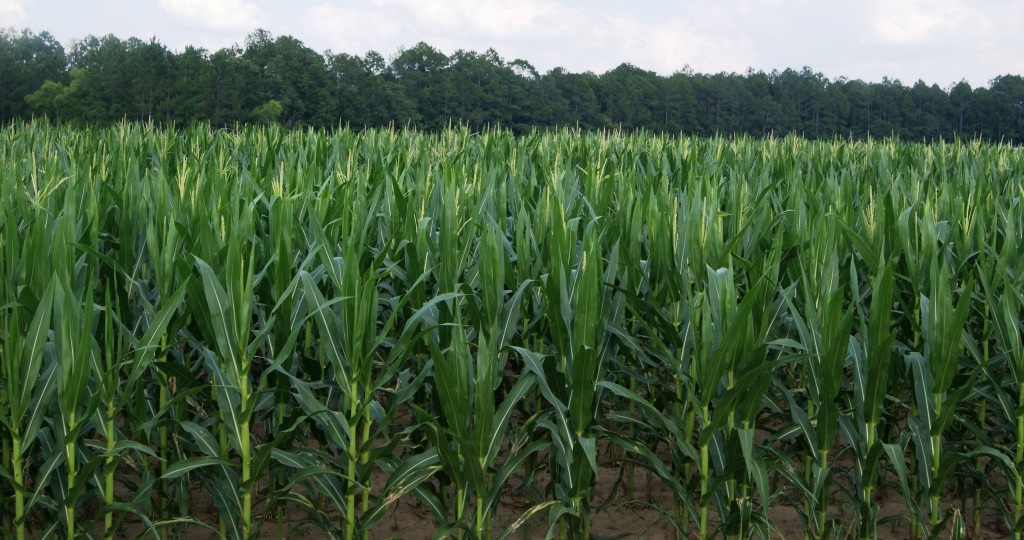
Sweet corn is a favorite among home gardeners. As long as the space is available, it’s not difficult to grow.
Corn is a new world native crop, with archaeological evidence suggesting that it was first domesticated in Mexico. This crop was the basis of the Mayan, Incan and Aztec civilizations, and by the time European explorers came to the New World in the 1500s, corn had become a staple for the native people.
Corn is monoecious (mon-ee-shuss) which means that there are both male and female flowers on each corn plant. In some monoecious plants, male and female parts are in the same flower. In corn, male and female flowers are in different locations, the male flowers form a tassel which is at the top of the plant. The female flower is located at the junction of leaves and stem. It consists of collection of hairs (silks) enclosed in the husks of what will become the ears. There silks are pollen receiving tubes. Wind-blown pollen from the mole flower (tassel) falls on the silks below. Each silk leads to a kernel, and pollen must land on all silk for the ear to fill out completely with kernel.
Corn comes in a variety of colors and sugar contents. Look for sugary enhanced varieties, with firm and sweet kernels, or the super sweet varieties, with tender and very sweet kernels. Some varieties of white and yellow corn that perform well in Florida are Silver Queen (white), “How Sweet It Is” (white), “Sweet Ice” (white), “Merit” (yellow), “Kandy Korn” (yellow), and “Peaches and Cream” (bicolor).
Sweet corn thrives best in well-drained soils but will tolerate a wide range of soil types. Optimum pH ranges from 6.0 to 6.5.
Till the soil to a depth of 6 to 8 inches using a spade, plow or rototiller. Avoid tilling the soil while it is too wet because clodding may occur.
Sweet corn is a warm-season vegetable requiring soil temperature between 60-90 degrees F°. Avoid planting seed in cool soils. Wait until after the last average dates of the last killing frost before planting. If planted too early, weak stands, stunted growth or frost-killed seedling may result. The newer, sweeter varieties are even more sensitive to cool, wet soils any may not perform well in these conditions.
Plant corn in an area that receives at least 6 to 8 hours of sunlight. It is beneficial to plant near a water source for needed irrigation.
Plant seed approximately 1 to 1 ½ inch deep in rows 3 feet apart with 8 to 12 inches between each seed in the row. A hand pushed mechanical planter can make seeding much easier for larger stands of corn.
A soil test through the local County Extension Office is always the best way to determine the lime and fertilizer needs. If lime is required, it can be tilled into the ground during soil preparation but is most effective when applied 2 to 3 months prior to planting.
If a soil test is not done, a general guideline is to apply 3-4 pounds of 10-10-10 per 100 linear row feet before planting. Side dress two or three times during the growing season with ammonium sulfate (21-0-0-17) at the rate of 2 pounds per 100 feet of row space. More frequent side dressing may be required on sandy soils or when excessive ran occurs.
Corn requires a minimum of 1 inch of water per week for normal development. The most critical period for water is during pollination and during final ear filling.
Sweet corn matures in 60 to 100 day, depending on the varieties. Sweet corn should be ready for harvest about 20 days after the appearance of the first silk stands, sweet corn is picked during the “milk stage” when the kernels are fully formed but not completely mature.
After picking, cook and eat corn that day or store it in cool temperatures, such as in a refrigerator, as soon as possible. It can then be canned, frozen or eaten fresh within few days. Keeping the corn cool is the key to better flavor as high temperatures will convert the sugar in the kernels to starch, giving it a bland taste.
 0
0
